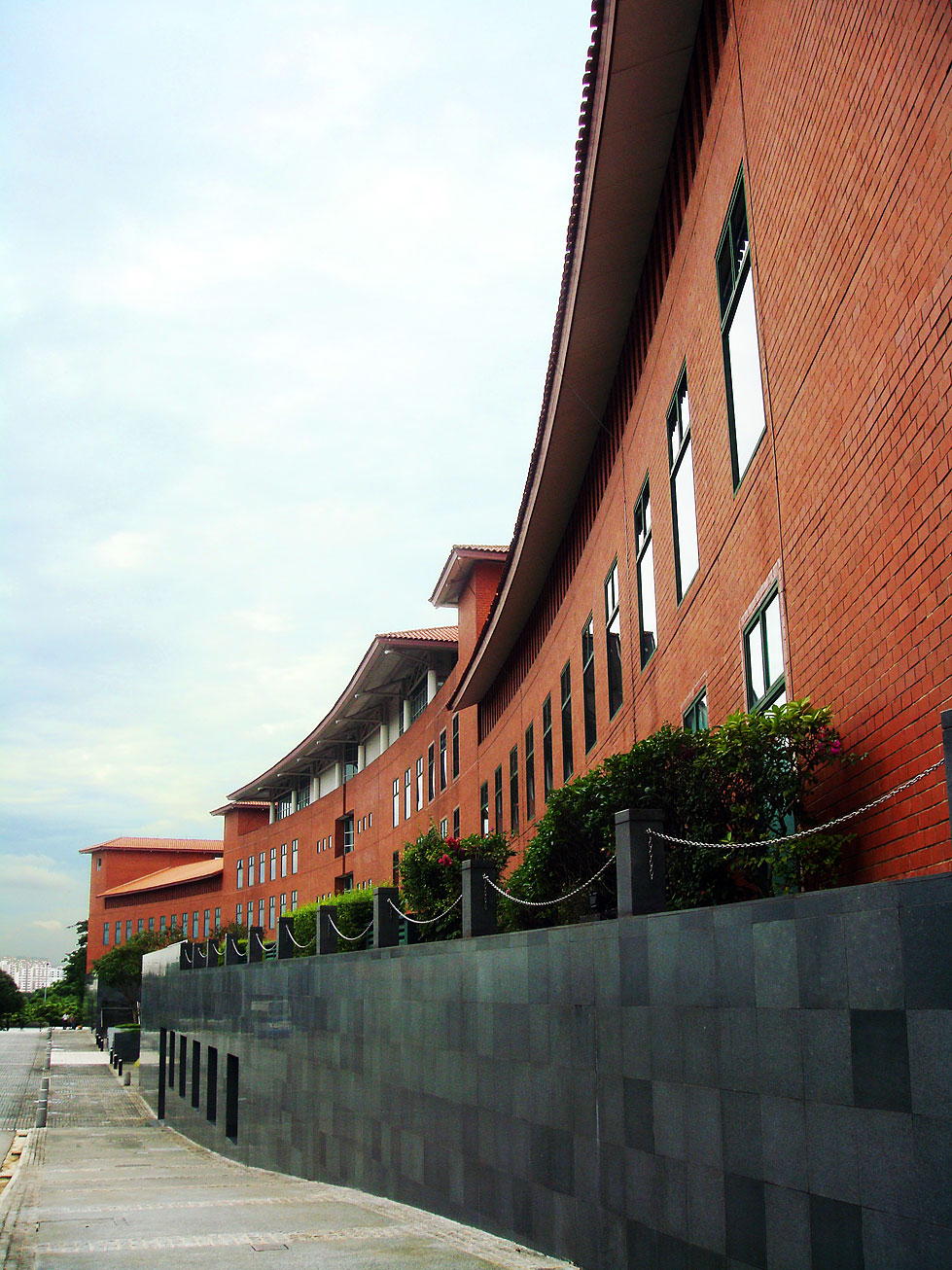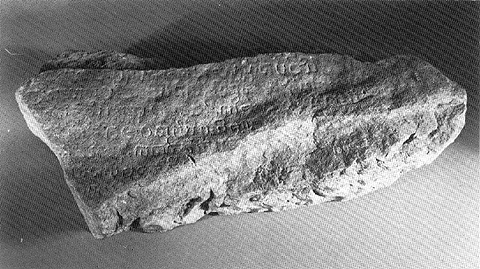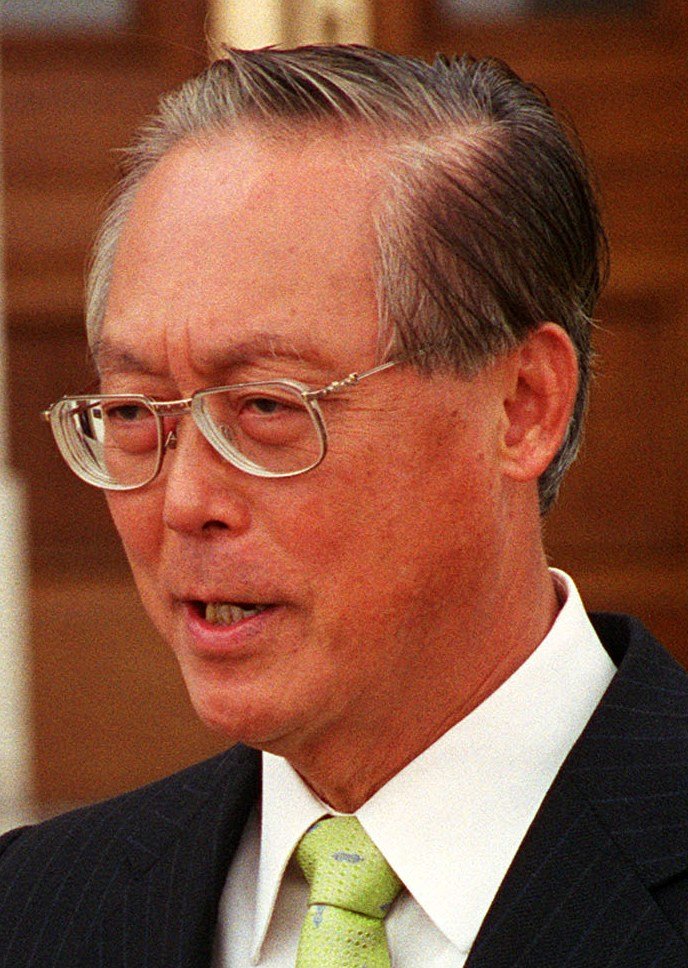|
NSmen
National Service (NS) is the national policy in Singapore mandated by statutory law that requires all male Singaporean citizens and second-generation permanent residents to serve a period of compulsory service in the uniformed services. It was first instituted in 1967 to help build Singapore's armed forces soon after the country gained independence in 1965, and has since been expanded to involve the police force and civil defence force as well. Upon enlistment, male citizens and second-generation permanent residents serve two years in active duty as full-time national servicemen (NSFs) in the Singapore Armed Forces (SAF), Singapore Police Force (SPF) or Singapore Civil Defence Force (SCDF), following which they transit to an operationally-ready reservist state as operationally-ready national servicemen (NSmen). A two-month reduction in full-time national service is offered to all pre-enlistees who are able to pass their three-station Individual Physical Proficiency Test ... [...More Info...] [...Related Items...] OR: [Wikipedia] [Google] [Baidu] |
Individual Physical Proficiency Test
The Individual Physical Proficiency Test (IPPT) is a standard physical fitness test used by the Singapore Armed Forces (SAF), Singapore Police Force (SPF) and Singapore Civil Defence Force (SCDF) to test the basic components of physical fitness and motor skills of their members. The IPPT is applicable to all eligible persons with National Service (NS) liability, including Full-Time National Servicemen (NSFs), Operationally-Ready National Servicemen (NSmen, or reservists), and regulars. The test presently consists of three stations: sit-up, push-up, and run. Based on their age, sex and vocation, persons taking the IPPT are required to meet certain standards under the IPPT Standards and Scoring System in order to pass the test. , about 116,000 people take the IPPT every year. Personnel who have a Physical Employment Standards (PES) status of B3/4, C or E are exempt from taking the IPPT. History When National Service was first introduced in Singapore in 1967, the physical fit ... [...More Info...] [...Related Items...] OR: [Wikipedia] [Google] [Baidu] |
Singapore Armed Forces
The Singapore Armed Forces (SAF) are the military services of the Republic of Singapore, responsible for protecting and defending the security interests and the sovereignty of the country. A military component of the Ministry of Defence (MINDEF), the armed forces have four service branches: the Army, the Navy, the Air Force, and the Digital and Intelligence Service. An integrated force, it is one of the most capable, robust, technologically sophisticated and powerful militaries in Southeast Asia and the surrounding regions. The SAF is headed by the chief of Defence Force, who holds the rank of a Lieutenant-General or Vice-Admiral, and is appointed by the president of Singapore. The SAF consists of four service branches: the Singapore Army, the Republic of Singapore Navy (RSN), the Republic of Singapore Air Force (RSAF), and the Digital and Intelligence Service (DIS). The SAF protects the interests, sovereignty and territorial integrity of Singapore from external threats ... [...More Info...] [...Related Items...] OR: [Wikipedia] [Google] [Baidu] |
Reservist
A reservist is a person who is a member of a military reserve force. They are otherwise civilians, and in peacetime have careers outside the military. Reservists usually go for training on an annual basis to refresh their skills. This person is usually a former active-duty member of the armed forces, and they remain a reservist either voluntarily, or by obligation. In some countries such as Israel, Norway, Finland, Singapore, and Switzerland, reservists are conscripted soldiers who are called up for training and service when necessary. History The notion of a reservist has been around, in many forms, for thousands of years. In ancient times, reservist forces such as the Anglo-Saxon Fyrd and the Viking Leidangr formed the main fighting strength of most armies. It was only at the end of the 17th century that professional standing armies became the norm. Historically reservists played a significant role in Europe after the Prussian defeat in the Battle of Jena-Auerstedt. On 9 ... [...More Info...] [...Related Items...] OR: [Wikipedia] [Google] [Baidu] |
Singapore Civil Defence Force
The Singapore Civil Defence Force (SCDF) is an uniformed organisation in Singapore under the Ministry of Home Affairs that provides emergency services such as firefighting, technical rescue, and emergency medical services, and coordinates national civil defence programme. History Singapore's first Fire Committee was formed in 1855. Prior to this, fires were attended to by uniformed groups which included the police, sepoys, marine soldiers and even convicts. On 7 September 1869, the Governor Major-General Sir Harry St. George Ord enacted the Fire Ordinance and appointed the Colonial Engineer as Chairman of the Fire Commission for Singapore. This Fire Commission was however later disbanded in 1884 due to poor organisation and difficult circumstances. In 1888, the Singapore Fire Brigade was established as a fully-equipped professional brigade with sufficient funding. By 1909, there were a total of three built stations servicing Singapore, namely Central Fire Station at Hill Stre ... [...More Info...] [...Related Items...] OR: [Wikipedia] [Google] [Baidu] |
Singapore Police Force
The Singapore Police Force (SPF) is the national and principal law enforcement agency responsible for the prevention of crime and law enforcement in the Republic of Singapore. It is the country's lead agency against organised crime; human, weapon trafficking; cyber crime; as well as economic crime that goes across domestic and international borders, but can be tasked to investigate any crime under the purview of the Ministry of Home Affairs (MHA) and is accountable to the Parliament of Singapore. SPF's main geographical area of responsibilities covers the entire country, consisting of five regions which are further divided into 55 planning areas. The organisation has various staff departments with specific focuses. These include the Airport Police Division (APD), which covers policing of Singapore's main civilian airports of Changi and Seletar, or the Police Coast Guard (PCG), which protects and enforces areas under Singapore's territorial waters and its ports. Formerly know ... [...More Info...] [...Related Items...] OR: [Wikipedia] [Google] [Baidu] |
BMT Passing Out Parade 100115
BMT or bmt may refer to: Transportation * Brooklyn–Manhattan Transit Corporation, one of the three original New York City Subway systems * IATA code and FAA location identifier for Beaumont Municipal Airport, Beaumont, Texas * Station code for Beaumont (Amtrak station), Beaumont, Texas * Station code for Bedminster railway station, Bristol, England Science or technology * Bone Marrow Transplantation, Hematopoietic stem cell transplantation * "best medical therapy", in medicine a term used to point to the best drug treatment according to the current standards * 5-hydroxyfuranocoumarin 5-O-methyltransferase, an enzyme * Bangladesh Meteorological Department, the national meteorological organization of Bangladesh * Barcelona Moon Team, a Spanish Google Lunar X-Prize competitor Other * Basic Military Training in some military forces * BMT Limited, a British consulting company * Benton MacKaye Trail, a footpath in the Appalachian Mountains * Biel Mean Time, a decimal time syste ... [...More Info...] [...Related Items...] OR: [Wikipedia] [Google] [Baidu] |
Lance Corporal
Lance corporal is a military rank, used by many armed forces worldwide, and also by some police forces and other uniformed organisations. It is below the rank of corporal, and is typically the lowest non-commissioned officer (NCO), usually equivalent to the NATO Rank Grade OR-3. Etymology The presumed origin of the rank of lance corporal derives from an amalgamation of "corporal" from the Italian phrase ''capo corporale'' ("head of the body") with the now-archaic '' lancepesade'', which in turn derives from the Italian ''lancia spezzata'', which literally means "broken lance" or "broken spear", formerly a non-commissioned officer of the lowest rank. It can be translated as "one who has broken a lance in combat", and is therefore a leader. "Lance" or "lances fournies" was also a term used in Medieval Europe to denote a unit of soldiers (usually 5 to 10 men strong). Brazil After the independence of Brazil in 1822, the new Brazilian Army followed the Portuguese system of ranks, h ... [...More Info...] [...Related Items...] OR: [Wikipedia] [Google] [Baidu] |
Indians In Singapore
Indian Singaporeans (Tamil: ') are Singaporeans of Indian or South Asian ancestry, who constitute 9.0% of the country's citizens, making them the third largest ancestry and ethnic group in Singapore. While contact with ancient India left a deep impact on Singapore's indigenous Malay culture, the mass settlement of Indians on the island only began with the founding of modern Singapore by the British in 1819. Initially, the Indian population was transient, mainly comprising young men who came as workers, soldiers and convicts. By the mid-20th century, a settled community had emerged, with a more balanced gender ratio and a better spread of age groups. Indian Singaporeans are linguistically and religiously diverse, with ethnic Tamils and Hindus forming majorities. The Indo-Singaporean culture has endured and evolved over almost 200 years. By the 1990s, it had grown somewhat distinct from contemporary South Asian cultures, even as Indian elements became diffused within a broader ... [...More Info...] [...Related Items...] OR: [Wikipedia] [Google] [Baidu] |
Ministry Of Defence (Singapore)
The Ministry of Defence (MINDEF; ms, Kementerian Pertahanan; zh, 新加坡国防部; ta, தற்காப்பு அமைச்சு) is a ministry of the Government of Singapore responsible for overseeing the national defence of Singapore. History MINDEF, together with the Ministry of Home Affairs, was created on 11 August 1970 by splitting up the then Ministry of Interior and Defence. Responsibilities MINDEF's mission is to "enhance Singapore's peace and security through deterrence and diplomacy, and should these fail, to secure a swift and decisive victory over the aggressor." It has a policy of ''Total Defence'' which consists of Military Defence, Civil Defence, Economic Defence, Social Defence, Psychological Defence and Digital Defence involving the people, public and private sectors of the country. Organisational structure MINDEF oversees a single statutory board, the Defence Science and Technology Agency. The Singapore Armed Forces, which is in charge of t ... [...More Info...] [...Related Items...] OR: [Wikipedia] [Google] [Baidu] |
Lee Hsien Loong
Lee Hsien Loong (; born 10 February 1952) is a Singaporean politician and former brigadier-general who has been serving as Prime Minister of Singapore and Secretary-General of the People's Action Party since 2004. He has been the Member of Parliament (MP) representing the Teck Ghee division of Ang Mo Kio GRC since 1991, and previously Teck Ghee SMC between 1984 and 1991. Born in Singapore during British colonial rule, Lee is the eldest son of Singapore's first prime minister, Lee Kuan Yew. He graduated from Trinity College, Cambridge in 1974 with a Bachelor of Arts with first class honours degree in mathematics and a diploma in computer science (now equivalent to a master's degree in computer science) with distinction. He also completed a Master of Public Administration degree at Harvard Kennedy School in 1980. He served in the Singapore Armed Forces (SAF) between 1971 and 1984, and attained the rank Brigadier-General before entering politics in 1984 where he was elected as ... [...More Info...] [...Related Items...] OR: [Wikipedia] [Google] [Baidu] |
PULHHEEMS
{{Citations missing, date=September 2007 The PULHHEEMS is a system of grading physical and mental fitness used by Britain's armed forces. PULHHEEMS is tri-service, which is to say that it is used by the British Army, the Royal Navy and the Royal Air Force. Its purpose is to determine the suitability of its employees for posting into military zones. It is not a fitness test as such; rather, it is a test of suitability for purpose. The PULHHEEMS system, or variations of it, is also used by several members of the British Commonwealth, including Singapore, Canada, Australia , Sri Lanka and New Zealand. The USA uses a system called ''PULHES''. In civilian life, there is a similar system called ''PULSES'' which is used to grade levels of disability; it differs from the PULHHEEMS in that it also examines the digestive system, something which the PULHHEEMS does not. Usage For new recruits it is part of the first step into the armed forces, whilst for established service people it is a r ... [...More Info...] [...Related Items...] OR: [Wikipedia] [Google] [Baidu] |
Institute Of Technical Education
The Institute of Technical Education (ITE) is a post-secondary education institution and statutory board under the purview of the Ministry of Education in Singapore. Established by the Ministry of Education, it was formerly known as Vocational and Industrial Training Board (VITB). ITE has three colleges that offer the National ITE Certificate (NITEC), Higher NITEC, Technical Diploma and Work-Study Diploma. Apart from providing vocational education to secondary school graduates, ITE offers apprenticeships for the skilled trades and diplomas in vocational education for skilled technicians and workers in support roles in professions such as accountancy, architecture, business administration, engineering and nursing. History 1960s to 1970s: Vocational and Industrial Training Board (VITB) During the 1960s and 1970s, vocational education was managed by two separate statutory boards, the Adult Education Board (AEB) and the Industrial Training Board (ITB). They were merged in 1979 to fo ... [...More Info...] [...Related Items...] OR: [Wikipedia] [Google] [Baidu] |







